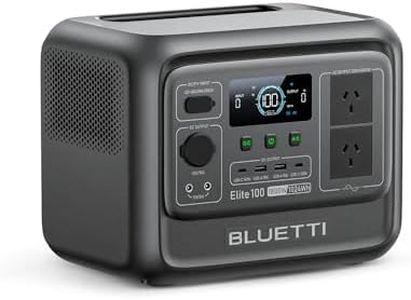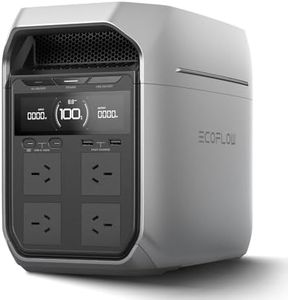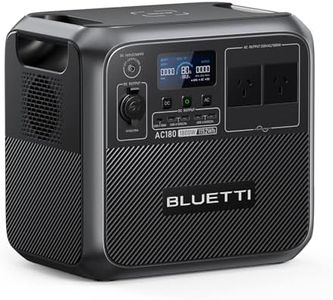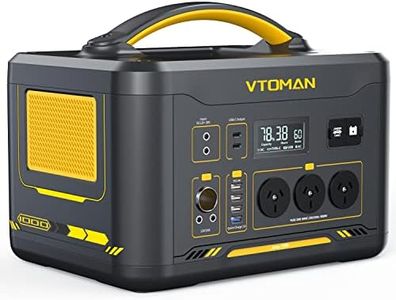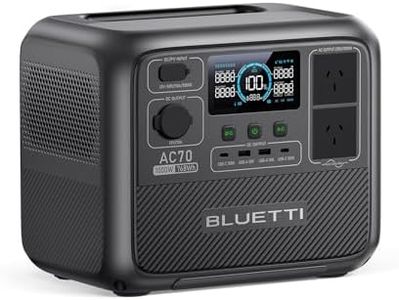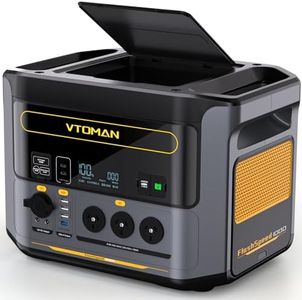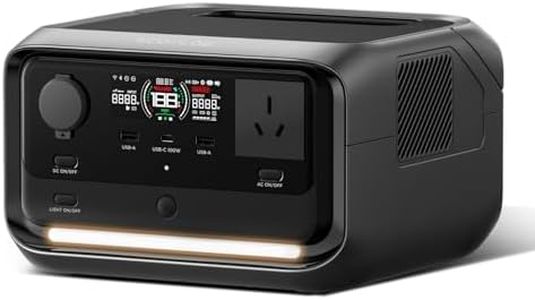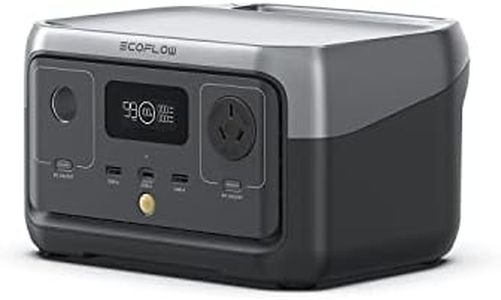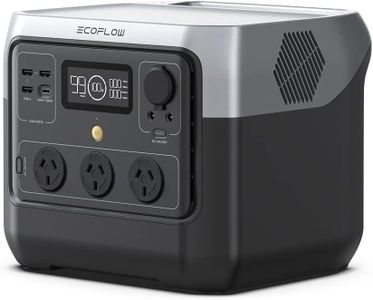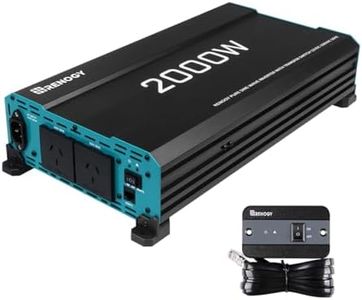We Use CookiesWe use cookies to enhance the security, performance,
functionality and for analytical and promotional activities. By continuing to browse this site you
are agreeing to our privacy policy
10 Best Off Grid Solar Generators
From leading brands and best sellers available on the web.Buying Guide for the Best Off Grid Solar Generators
Choosing an off-grid solar generator is all about finding the best match for your personal energy needs, portability, and intended use. These systems are perfect for camping, emergency backup, tiny homes, or any situation where you need electricity but aren’t connected to the main power grid. When shopping, think carefully about how much power you need, how often you’ll move the generator, and the kinds of devices or appliances you want to run. Understanding the key features will help you avoid frustration and make sure your off-grid setup is reliable and efficient.Battery Capacity (Watt-hours or Wh)Battery capacity tells you how much energy the generator can store and supply before needing a recharge. It’s typically measured in watt-hours (Wh). This is crucial because it determines how long you can run your devices. Small battery capacities (under 500 Wh) are fine for phones, lights, or laptops for a few hours, making them ideal for light use or short trips. Mid-range capacities (500 Wh to 2000 Wh) can handle small appliances, tools, or multiple devices for longer periods—great for weekend camping or partial home backup. High capacities (over 2000 Wh) can power larger appliances like refrigerators or critical medical equipment for extended periods, suitable for backup during longer outages or off-grid living. To pick the right capacity, add up the wattage of all the devices you want to run and estimate how many hours you’ll need them—choose a generator with enough capacity to match or slightly exceed your needs.
Inverter Output (Watts)The inverter output is the maximum amount of power the generator can deliver at one time, usually measured in watts (W). This number needs to meet or exceed the combined wattage of anything you’ll have plugged in simultaneously. Lower output generators (under 300 W) are okay for charging gadgets or running a few small items. Medium output (300 W to 1500 W) allows for small kitchen appliances, fans, or TVs—these are common for camping or light backup. High output (over 1500 W) is needed to run larger equipment, tools, or to support critical home systems in an outage. Your choice here depends on the biggest or most demanding single device you’ll ever need to run.
Solar Input (Watts)Solar input refers to the maximum amount of solar panel power (in watts) the generator can use to recharge its battery. Higher solar input means faster charging, especially important if you rely solely on sunlight to keep things running. Generators with lower input (under 100 W) will recharge slowly, potentially requiring a full day or more in the sun for a complete recharge. Mid-range (100-300 W) offers quicker turnaround, suitable for regular daily use or unpredictable weather. High input (over 300 W) is best if quick recharge cycles are essential or you want to maximize solar energy collection on short, sunny days. Think about how often you’ll be able to set up solar panels and for how long—pick an input rating that matches your typical usage patterns.
Portability (Weight and Size)Portability covers both the weight and the physical size of the generator. Lightweight and compact models are easy to carry, making them ideal for camping, hiking, or moving between vehicles and sites. These often have smaller capacities but are much more convenient on the go. Heavier, bulkier models generally offer more power and storage but may be hard to move without wheels or multiple people; these are better suited for permanent installations or home backup. Decide how mobile you need your setup to be—if you’ll move it often, go for something lighter; if it will mostly stay put, focus on power and battery size.
Input/Output PortsInput/output ports are the types and numbers of connections for plugging in devices and charging the battery. Typical outputs include AC outlets, USB ports, DC car ports, and sometimes even specialized ports for solar input. A generator with more and varied outputs lets you charge or power multiple devices at once, accommodating both small electronics and larger appliances. If you have a mix of devices (such as phones, laptops, small fans, and a mini-fridge), opt for a generator with a good balance of AC, USB, and DC outputs. Make sure it matches the plugs of your most-used items.
Charge OptionsCharge options refer to the methods (besides solar) by which you can recharge the generator, such as AC wall outlets or car chargers. Some generators recharge much faster from a wall or car than from solar panels. If you’ll sometimes have access to grid power or a car, having these extra recharge options offers convenience and reliability. For fully off-grid use, solar becomes the most important, but a variety of charge methods adds flexibility. Think about where and how you’ll use the generator to decide which charging choices matter most to you.
Durability and Weather ResistanceDurability and weather resistance describe how well the generator handles rough conditions, such as rain, dust, or accidental drops. Models with tough casing, water resistance, and dust protection last longer and can handle outdoor use without worry. If you’ll be using the system mostly outside or in harsh environments, prioritize a durable, weather-resistant design. For indoor or occasional use, basic durability may be sufficient.
